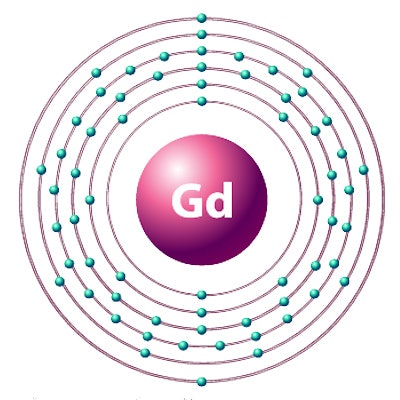
Could certain gadolinium-based contrast agents (GBCAs) be safe for patients undergoing an MRI scan whose stage 4 or 5 chronic kidney disease puts them at risk for nephrogenic systemic fibrosis (NSF)? In some cases, the answer is yes, according to a meta-analysis published December 9 in JAMA: Internal Medicine.
Rather surprisingly, a review of 16 studies published between 2008 and 2017 found no reports of NSF among some 5,000 patients with this severe renal ailment. The subjects received one of four GBCAs that were deemed as having "very low, if any, risk of NSF development" according to two radiological associations.
"The harms of withholding [these] GBCAs for indicated examinations may outweigh the risk of NSF in this population," wrote the authors, led by Dr. Sean Woolen from the University of Michigan. "These data support recent updates to American College of Radiology (ACR) and European Society of Urogenital Radiology guidelines liberalizing use of low-risk GBCAs for indicated examinations in this setting."
NSF is a potentially fatal skin and tissue disease that is known to occur in patients with stage 4 or 5 chronic kidney disease if they are given a GBCA for an MRI scan. More than 500 cases of NSF were reported between 1997 and 2007. Simply put, if a patient's estimated glomerular filtration rate (eGFR) is less than 30 mL/min, their kidneys cannot evacuate the toxic gadolinium.
In May 2019, the ACR, European Society of Urogenital Radiology, and Canadian Association of Radiologists recognized differences in risk of NSF among various GBCAs and divided the contrast agents into three categories. Group II included four GBCAs with "very low, if any, risk of NSF development," and they are listed below:
- Gadobenate dimeglumine (MultiHance, Bracco Imaging)
- Gadoteridol (ProHance, Bracco)
- Gadoterate meglumine (Dotarem, Guerbet)
- Gadobutrol (Gadavist, Bayer HealthCare).
The guidelines indicated that for these "lowest-risk GBCAs, kidney function measurement is not obligatory and that indicated contrast-enhanced MRI with a low-risk GBCA should not be denied on the basis of NSF risk alone," Woolen and colleagues noted. "Unfortunately, the specific risk to individual patients is not well understood or summarized in the literature. Knowledge of this risk is important for counseling and risk-benefit decision-making in individual patients."
To help determine that degree of risk, the researchers found 16 studies that matched their inclusion criteria. The papers included a total of 4,931 patients with stage 4 or 5 chronic kidney disease, the majority of whom received the linear GBCA gadobenate dimeglumine (64%). The macrocyclic GBCA gadoterate meglumine was the second most frequent choice (24%).
Most importantly, the researchers found no reports of NSF in their patient sample among the four very low-risk GBCAs.
| No. of NSF cases for four GBCAs | ||
| GBCA | No. of patients | No. of NSF cases |
| Gadobenate dimeglumine | 3,167 | 0 |
| Gadoterate meglumine | 1,204 | 0 |
| Gadobutrol | 330 | 0 |
| Gadoteridol | 230 | 0 |
"Despite existing U.S. Food and Drug Administration guidelines indicating that all GBCAs are contraindicated if the eGFR is less than 30 mL/min, these data suggest that group II GBCAs are relatively safe in patients with severe chronic kidney disease, and their benefits may exceed their risks for indicated examinations," Woolen and colleagues concluded. "Consistent with our results, recent updates to the ACR, European Society of Urogenital Radiology, and Canadian Association of Radiologists guidelines support use of indicated low-risk GBCAs in this setting."


.fFmgij6Hin.png?auto=compress%2Cformat&fit=crop&h=100&q=70&w=100)





.fFmgij6Hin.png?auto=compress%2Cformat&fit=crop&h=167&q=70&w=250)











